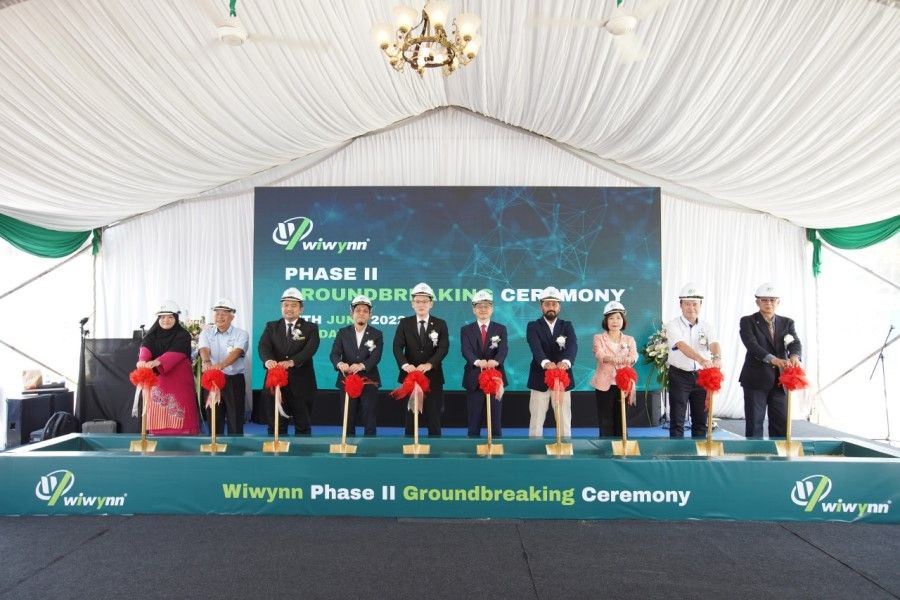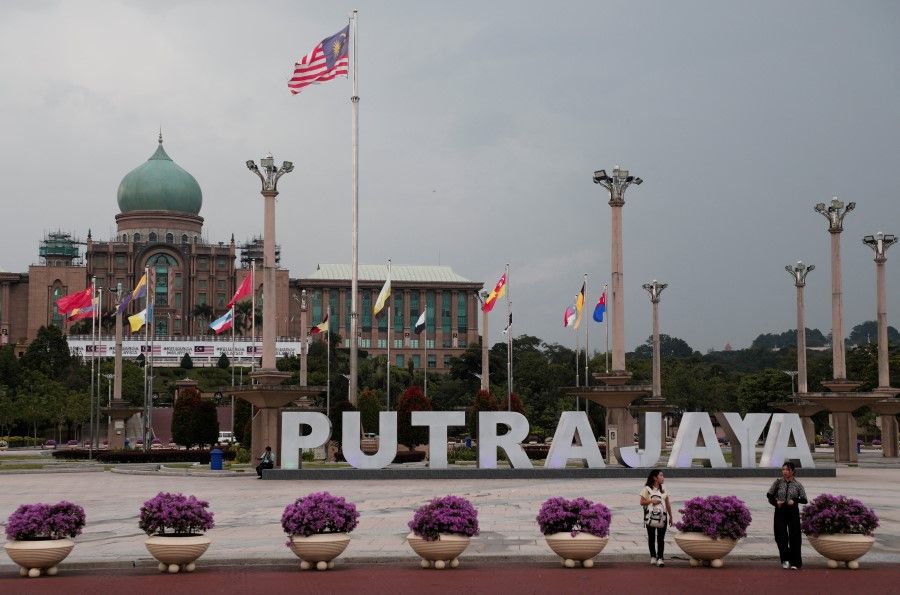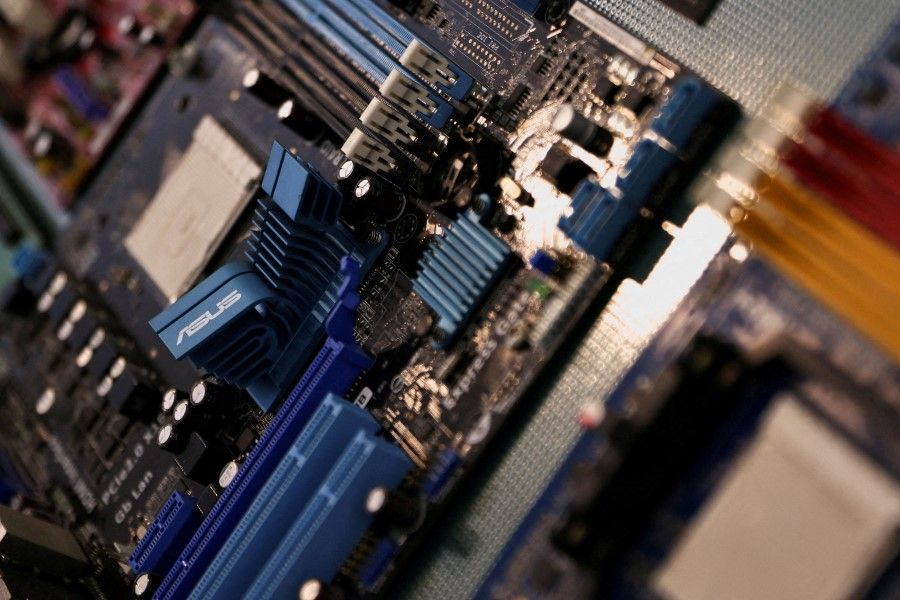Taiwan can be key driver of Malaysia's industrial upgrading

Once a major foreign investor in Malaysia in the 1990s, Taiwanese businesses have rekindled their interest in the Southeast Asian country in the past few years. The US-China trade war, higher production costs in China, Beijing's zero-Covid policy, reorganisation of semiconductor supply chains via the "Chip 4" alliance and the latest heightening of tensions in the Taiwan Strait all provide strong rationales for Taiwanese businesses to recalibrate their existing strategy of banking on China for the production of global consumer goods.
As such, the future trend of Taiwanese investments will be based on a two-pronged approach that serves to capture both China and the global markets separately. By diversifying their know-how, capital and technologies into Southeast Asian countries, Taiwanese investors are circumventing supply chain disruptions arising from acute geopolitical rivalry and fluctuating situations on China's domestic front.
From 1980 to 2021, Taiwan was the eighth largest source of manufacturing foreign direct investment (FDI) for Malaysia...
In the case of Malaysia, the renewed interest of Taiwanese investors is evident from recent statistics provided by the Malaysian Investment Development Authority (MIDA). From 1980 to 2021, Taiwan was the eighth largest source of manufacturing foreign direct investment (FDI) for Malaysia, just behind the heavyweights of the Netherlands, Singapore, Japan, the US, China, South Korea and Germany.
Within the same period, a total of RM 42.39 billion (US$ 13.98 billion) investment value from Taiwan was recorded in Malaysia's manufacturing sector, resulting in 2,577 investment projects and 386,762 jobs for Malaysians thus far.
If measured by the number of investment projects and the number of jobs created, only Japan and Singapore surpassed Taiwan in both categories - an indicator that Taiwanese investments are contributing significantly to Malaysia's economic development and local employment. With the reopening of borders in the post-pandemic period, more Taiwanese investments are expected to flow into Malaysia in the coming months.
In recent years, Taiwanese investments in Malaysia have been increasingly high-quality, the most representative of them being Ally Logistics Property (ALP) and Wiwynn Corporation.
Recent Taiwanese high-value investments
What is noteworthy, however, goes beyond the quantitative figures. In recent years, Taiwanese investments in Malaysia have been increasingly high-quality, the most representative of them being Ally Logistics Property (ALP) and Wiwynn Corporation.
Offering smart warehousing solutions unrivalled by other logistics giants in the world, ALP provides a one-stop centre for customers to "share their stockpiled goods" through the use of advanced software that is able to suit the packaging needs of customers and allows them to trade their goods in the smart warehouse without the need for transportation. By reducing complicated warehouse management to fluid and efficient processes, ALP's OMega smart warehouse facility in Bukit Raja (Selangor) is slated to draw RM 4.14 billion of investment value and create 3,000 skilled job opportunities for Selangorians and beyond.

Wiwynn Corporation, on the other hand, has the potential of making Malaysia the regional hub for the production of global hyper-scale data centres' infrastructures. It is another prominent Taiwanese conglomerate bringing in RM 500 million worth of investments for its rack integration and printed circuit boards (PCBs) plants in Senai. In all, the two plants are expected to produce 1,600 skilled job opportunities for the people of Johor and Wiwynn is even exploring the possibility of offering skilled training for the graduates of Universiti Teknologi Malaysia (UTM) in the near future.
Maintaining its leading edge
Malaysia continues to be an attractive destination for Taiwan despite the absence of diplomatic relations since 1974, as seen from data in the Standard Chartered for Borderless Business: Taiwan-ASEAN Corridor survey 2021. That said, maintaining this status comes with a set of challenges ahead, such as the rise of Vietnam as a strong competitor for Taiwanese high-value investments, the deficit of a local technical workforce in Malaysia, and a lack of technological upgrading among Malaysian small and medium enterprises (SMEs) within the manufacturing sector.
In order to respond to these challenges, there are three measures that Malaysia should take to keep its leading edge in the region.
Malaysia has to up its game and distinguish itself from its Vietnamese counterpart by strategically calibrating specific training programmes in high-end industries with existing Taiwanese investments...
First, Malaysia should encourage local higher education institutions (HEIs) to establish high-impact vocational programmes with Taiwanese investors on the local scene. As highlighted by the Federation of Malaysian Manufacturers (FMM), a shortage of skilled manpower is a longstanding problem affecting Malaysia's economic recovery in the post-pandemic era. With business costs higher than that in Vietnam, having a large pool of technical manpower remains Malaysia's best bet in keeping its leading edge against its northern neighbour, when it comes to attracting high-end foreign investors including the Taiwanese.

But with Vietnam vigorously capitalising on the large presence of Taiwanese investors to train and employ their workforce through the list of 70 vocational programmes established with Taiwan's HEIs, there is no way for Malaysia to continue its business-as-usual approach.
Instead, Malaysia has to up its game and distinguish itself from its Vietnamese counterpart by strategically calibrating specific training programmes in high-end industries with existing Taiwanese investments which lack a skilled workforce to man the operation lines.
One potential starting point is establishing tailor-made vocational programmes (including job placement arrangements) for industries related to semiconductor production, considering that Malaysia is deeply connected to the semiconductor supply chain as lower- to medium-end producers.
Second, as a traditional destination for Taiwan's investments, Malaysia's ties with the Taiwanese business community can be traced to the 1980s. With this advantage, Malaysia should work on attracting more Taiwanese big names - high-end manufacturing companies in particular - to choose Malaysia over its neighbours as their investment destination.
Win-win arrangements
Furthermore, since Malaysia has a sizeable pool of Taiwanese companies that supply their lower- to medium-end goods to top clients in the manufacturing supply chain, MIDA could readily enlist the support of the Taiwan Chamber of Commerce and Industry in Malaysia (TIAM) to network with these manufacturing giants and bring them over to Malaysia for high-value investments. Joint business matchings, seminars and even sports competitions, are the events that MIDA can consider co-organising with TIAM in the long run.
... Malaysia has to ensure that Malaysian SMEs are benefiting from a certain level of technology transfer through cooperation with Taiwanese companies.

Lastly, Malaysia has to ensure that Malaysian SMEs are benefiting from a certain level of technology transfer through cooperation with Taiwanese companies. Given that Taiwanese technologies are reliable, cheaper and transferrable to local partnering companies over the long term, Malaysia should capitalise on these advantages to achieve industrial upgrading in the manufacturing sector.
In Taiwan's case, having a huge pool of SMEs is crucial in providing low- and medium-end support to Taiwanese manufacturing giants that dominate the higher echelon of the supply chain. Malaysia can draw valuable lessons from the Taiwanese experience by building a strong pool of local SMEs that sets technology transfer as a criterion for future industrial cooperation.
By deepening business cooperation for mutual benefit, both Taiwan and Malaysia can achieve a win-win in an increasingly disruptive regional climate. As Malaysia acts as a buffer for Taiwanese investors who wish to diversify their production away from mainland China in order to continue serving global consumers, it should also take the opportunity to "open" the Taiwanese window further, by attracting Taiwan's know-how, capital and technologies to Malaysian shores to upgrade the country's manufacturing industries.
This article was also published in Lianhe Zaobao as "积极引进台商提升马国产业".
Related: Alibaba's expansion into Malaysia: A double-edged sword? | Taiwan: A runway for great powers to flex their muscles? | China's semiconductor Great Leap Forward is doomed to fail | Cut-throat competition for world-class chips: The end of Huawei? | Faced with a shortage of water, electricity and vaccines, can Taiwan still deliver the chips?

